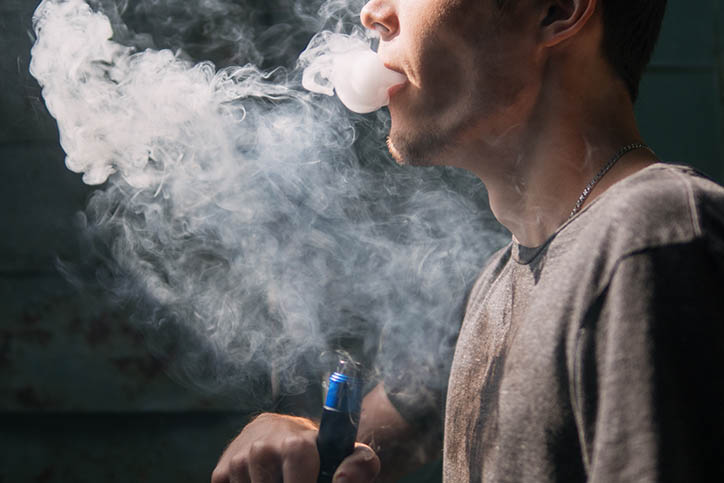It seems as though every day there is a story about lung injury caused by vaping in the news. Federal, state, and local agencies are looking into these cases all over the country to try to determine a specific cause for patients’ illness. As of Oct. 15, there have been just under 1,500 cases reported to the Centers for Disease Control (CDC) from 49 states, the District of Columbia, and one U.S. territory. There have been 33 deaths confirmed in 24 states. The majority of the patients are under 35 years old.
E-cigarettes were introduced in the U.S. in 2007. E-cigarettes differ from regular cigarettes in that they do not contain tobacco. Instead, they heat up a liquid to make it into a vapor that can be inhaled. Researchers have suggested three different theories for the lung injury.
- The first theory suggests that newer e-cigarette devices heat the liquid to a higher temperature than older devices. This allows more of the chemicals to be inhaled into the lungs.
- Another theory is that lung injury might be caused by vaping new substances, such as ∆9-tetrahydrocannabinol (THC), a chemical found in cannabis (marijuana). More than 75% of patients said they had vaped THC. However, liquid THC has been available as a vaping solution for many years in some states, so it does not explain the sudden increase nationwide.
- The third, and most popular, theory centers on homemade vaping solutions. These solutions have been involved in more than half of EVALI cases. Since these solutions are often sold alongside legitimate products, people can do a “bubble test” to help identify real versus homemade products. Turn the cartridge/vial and watch the movement of the air bubble. Thinner, homemade solutions move quicker than legitimate solutions. To make thicker homemade solutions, people sometimes add thickening agents such as vitamin E oil or diacetyl, a butter flavoring associated with popcorn lung disease. These fat-like compounds entering the lung can injure the lung tissue and may explain the serious illness.
To help diagnose an EVALI case, doctors look for patients who have vaped in the past 90 days, and who have not been diagnosed with another infection. They may also order a lung x-ray to help with the diagnosis. Patients with EVALI may have the following symptoms:
- Gradual onset of cough and/or shortness of breath over days to weeks
- Stomach pain
- Nausea or vomiting
- General symptoms, such as tiredness, fever, and weight loss
The goal of treatment is to help lessen the symptoms which can worsen quickly, leading to respiratory failure and fluid leaking into the lungs, which makes it difficult or impossible to breathe. Patients often require oxygen therapy and severe symptoms may require a ventilator.
If you have questions about the CDC’s investigation into lung injuries associated with use of electronic cigarette, or vaping, products, contact CDC-INFO or call 1-800-232-4636.
Faisal Syed Minhaj, PharmD
Clinical Toxicology Fellow





Leave a Reply